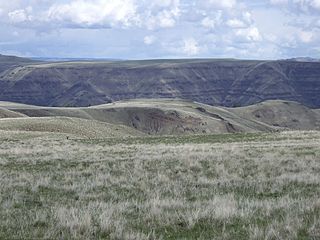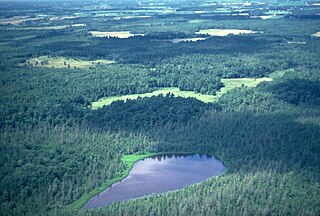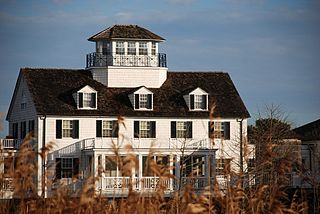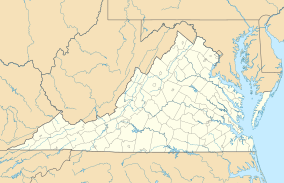
A nature reserve is a protected area of importance for flora, fauna, or features of geological or other special interest, which is reserved and managed for purposes of conservation and to provide special opportunities for study or research. They may be designated by government institutions in some countries, or by private landowners, such as charities and research institutions. Nature reserves fall into different IUCN categories depending on the level of protection afforded by local laws. Normally it is more strictly protected than a nature park. Various jurisdictions may use other terminology, such as ecological protection area or private protected area in legislation and in official titles of the reserves.

The Great Dismal Swamp is a large swamp in the Coastal Plain Region of southeastern Virginia and northeastern North Carolina, between Norfolk, Virginia, and Elizabeth City, North Carolina. It is located in parts of the southern Virginia independent cities of Chesapeake and Suffolk and northern North Carolina counties of Gates, Pasquotank, and Camden. Some estimates place the size of the original swamp at over one million acres (4,000 km2).

Chichester Harbour is a 3,733.5-hectare (9,226-acre) biological and geological Site of Special Scientific Interest (SSSI) west of Chichester in Hampshire and West Sussex. The SSSI is part of Chichester Harbour Area of Outstanding Natural Beauty and Solent Maritime Special Area of Conservation. It is also part of Chichester and Langstone Harbours Ramsar site, Special Protection Area and Nature Conservation Review site, Grade I. Part of it is a Geological Conservation Review site and two areas are Local Nature Reserves.

Cascade Head is a headland and 270-acre (110 ha) UNESCO biosphere reserve and United States Forest Service Experimental Forest. It is situated 85 miles (137 km) southwest of Portland, Oregon on the Oregon Coast between Lincoln City and Neskowin. Cascade Head Preserve is a Nature Conservancy Selected Site.

The Golden Gate Biosphere Network is an internationally recognized voluntary coalition of federal, state, and local government agencies, nonprofit organizations, universities, and private partners within the Golden Gate Biosphere (GGB) region. The Network works towards protecting the biosphere region’s biodiversity and conserving its natural resources to maintain the quality of life for people within the region. The Network has been part of the UNESCO Man and Biosphere Programme since 1988 and is part of the US Biosphere Network and EuroMAB. It is recognized by UNESCO due to the significant biodiversity of the region, as well as the Network's efforts to demonstrate and promote a balanced relationship between humans and the biosphere.

The Western Pennsylvania Conservancy (WPC) is a private nonprofit conservation organization founded in 1932 and headquartered in Pittsburgh, Pennsylvania. WPC has contributed land to 12 state parks and conserved more than a quarter million acres of natural lands. The Conservancy plants and maintains more than 132 gardens in 20 Western Pennsylvania counties, as well as planting thousands of trees through its community forestry program. WPC has protected or restored more than 3,000 miles (4,800 km) of rivers and streams. In 1963, Edgar Kaufmann Jr. entrusted Frank Lloyd Wright's masterwork Fallingwater to the Conservancy. The house was called the most important building of the 20th century by the American Institute of Architects.

Zumwalt Prairie is a grassland area located in Wallowa County in northeast Oregon, United States. Measuring 330,000 acres (130,000 ha), much of the land is used for agriculture, with some portions protected as the Zumwalt Prairie Preserve owned by The Nature Conservancy. Part of that portion is designated as a National Natural Landmark. The high altitude prairie is along the west edge of Hells Canyon on the Oregon-Idaho border.

The Atlantic Flyway is a major north-south flyway for migratory birds in North America. The route generally starts in Greenland, then follows the Atlantic coast of Canada, then south down the Atlantic Coast to the tropical areas of South America and the Caribbean. Every year, migratory birds travel up and down this route following food sources, heading to breeding grounds, or traveling to overwintering sites.
The 3,848 acres (6.013 sq mi) Landels-Hill Big Creek Reserve located in the southern region of Big Sur, California is owned by the University of California Natural Reserve System. It is located off State Route 1 in 50 miles (80 km) south of Monterey and adjacent to the Big Creek State Marine Reserve and Big Creek State Marine Conservation Area. It is open to the general public one day a year.

According to the California Protected Areas Database (CPAD), in the state of California, United States, there are over 14,000 inventoried protected areas administered by public agencies and non-profits. In addition, there are private conservation areas and other easements. They include almost one-third of California's scenic coastline, including coastal wetlands, estuaries, beaches, and dune systems. The California State Parks system alone has 270 units and covers 1.3 million acres (5,300 km2), with over 280 miles (450 km) of coastline, 625 miles (1,006 km) of lake and river frontage, nearly 18,000 campsites, and 3,000 miles (5,000 km) of hiking, biking, and equestrian trails.
Hog Island is one of the Virginia Barrier Islands located southeast of Exmore in Northampton County, Virginia, and is a part of the Virginia Coast Reserve of The Nature Conservancy. The island, then known as Machipongo Island was first settled in 1672 by a group of 22 English colonists. The island was later abandoned and remained uninhabited until around the time of the American Revolution when it was resettled. In the late 1800s, at least five lavish hunting and fishing clubs that primarily catered to wealthy sportsmen from the Northeast were established on Virginia's barrier islands; one of the largest and most lavish of these clubs was in the town of Broadwater, Virginia, on Hog Island.
The Virginia Coast Reserve Long-Term Ecological Research (VCR/LTER) project is funded by the National Science Foundation. The VCR/LTER project's research activities focus on the mosaic of transitions and steady-state systems that comprise the barrier-island/lagoon/mainland landscape of the Eastern Shore of Virginia. Research is conducted in mainland marshes, the lagoon system behind the barrier islands, and on the islands themselves, particularly Hog Island. The VCR/LTER began operation in 1987. It initially focused on geophysical controls on coastal ecosystems. In 1992-1994 it broadened that focus to address the concept of ecological state change, which was linked in 1994-2000 to relationships between free surfaces. More recent work (2000-2006), added a hypsometric perspective, which provides an alternate way of examining ecological patterns on the coastal landscape. It makes extensive use of the Virginia Coast Reserve of The Nature Conservancy.
Ernst Volgenau is the chairman founder, and former CEO of SRA International.
Parramore Island Natural Area Preserve is a 7,000-acre (28 km2) Natural Area Preserve located in Accomack County, Virginia, United States. Located on one of the barrier islands along the Atlantic Ocean, it is the state's largest Natural Area Preserve. More than 7.5 miles (12.1 km) long, it features a number of beaches, dunes, scrubs, marshes, and natural communities.

The Cedar Creek Ecosystem Science Reserve is an ecological research site located primarily in East Bethel, Minnesota in the counties of Anoka and Isanti on the northern edge of the Minneapolis-Saint Paul metropolitan area.

Coast Guard Station Cobb Island is a former United States Coast Guard Station that was built on the southern end of Cobb Island, Virginia, one of Virginia's Barrier Islands, on Virginia's Eastern Shore, in 1936, to replace an earlier c. 1877 Coast Guard Station that had been damaged by a hurricane. The Coast Guard decommissioned Station Cobb Island in 1964. The Nature Conservancy (TNC) acquired the abandoned former Station Cobb Island in 1973. TNC moved the buildings comprising the former Station Cobb Island, by barge, eight miles across Cobb Island Bay, to a newly prepared site in Oyster, Northampton County, Virginia, on Virginia's Eastern Shore, in May 1998. TNC subsequently restored the former Station Cobb Island as a nature education center/lodge/conference center through adaptive reuse. The property is currently listed for sale.

The Palos Verdes Peninsula Land Conservancy (PVPLC) is a non-profit organization that is based on the Palos Verdes Peninsula in southwestern Los Angeles County, California.
The Nature Conservancy of Canada (NCC) is recognized as the largest, private nature conservation and restoration organization in Canada. Using evidence-based solutions as a guiding principle in selecting locations to conserve, since its founding in 1962 the non-profit, charitable organization and its partners have protected 14 million hectares of ecologically important lands and waters across Canada, along with habitat for more than a quarter of the country’s species at risk. With offices in each province, NCC works at a local level with a wide array of stakeholders and partners to secure parcels of land.

The Virginia Barrier Islands are a continuous chain of long, narrow, low-lying, sand and scrub barrier islands separated from one another by narrow inlets and from the mainland by a series of shallow marshy tidal bays along the entire coast of the Virginia end of the Delmarva Peninsula. Several of these islands were once significantly larger, covered with pine forests, and inhabited. After the completion of the New York, Philadelphia and Norfolk Railroad in the late 19th Century, at least five lavish hunting and fishing clubs were established on Virginia's barrier islands and they became a playground for wealthy sportsmen from Northeastern cities who would arrive by train. US President Grover Cleveland visited Hog Island to hunt waterfowl and go fishing in the early 1890s.














